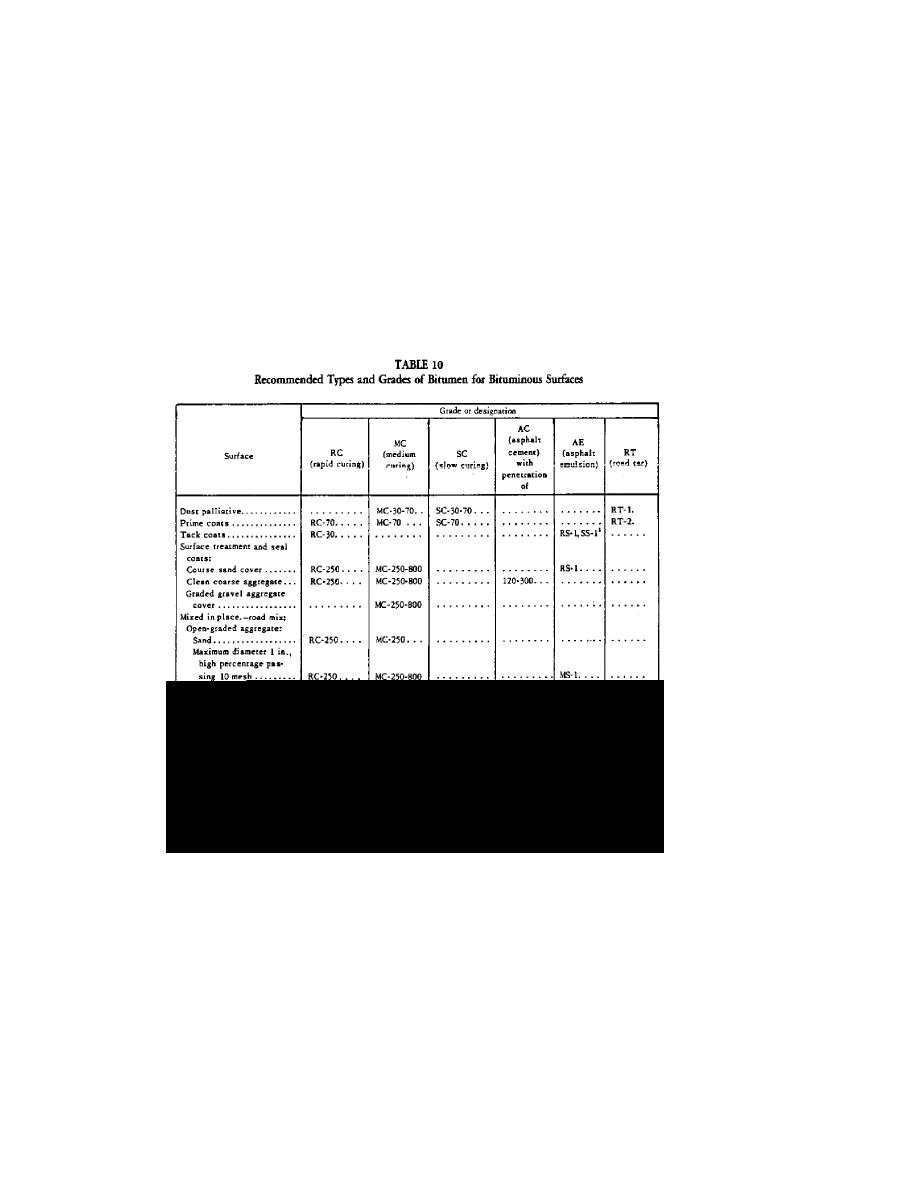
(3) Emulsified asphalts consist of an asphalt cement suspended in
water with us of an emulsifying agent. Emulsified asphalts are commonly used
for tack coats, slurry seal coats, and in road mixes. Emulsified asphalts may
be either the anionic (negative charge) or cationic (positive charge) type and
are further classified as to curing rate, that is, rapid setting (RS), medium
setting (MS), and slow setting (SS). Recommended type and grades of bitumen
for road and street pavements are given in Table 10.
b. Tar. Road tar is not as readily available as asphalt. Tar is softer at
high temperatures and more brittle at lower temperatures than comparable
grades of asphalt cement. However, tars are resistant to fuel spillage and
will not strip from hydrophilic aggregates in the presence of water.
Applicable ASTM specifications for tars are included in Table 9.
c. Tar-Rubber Blends. Tar-rubber blends combine resistance to fuels with
higher resistance to temperature changes. These mixes are normally used for
specialized areas, particularly on airfield pavements. For a complete
discussion, see Bitumnous Pavement Standard Practice, DA TM 5-822-8.
[retrieve Table 10 - Recommended Types & Grades of Bitumen for Bituminous
Surfaces]
23


 Previous Page
Previous Page
